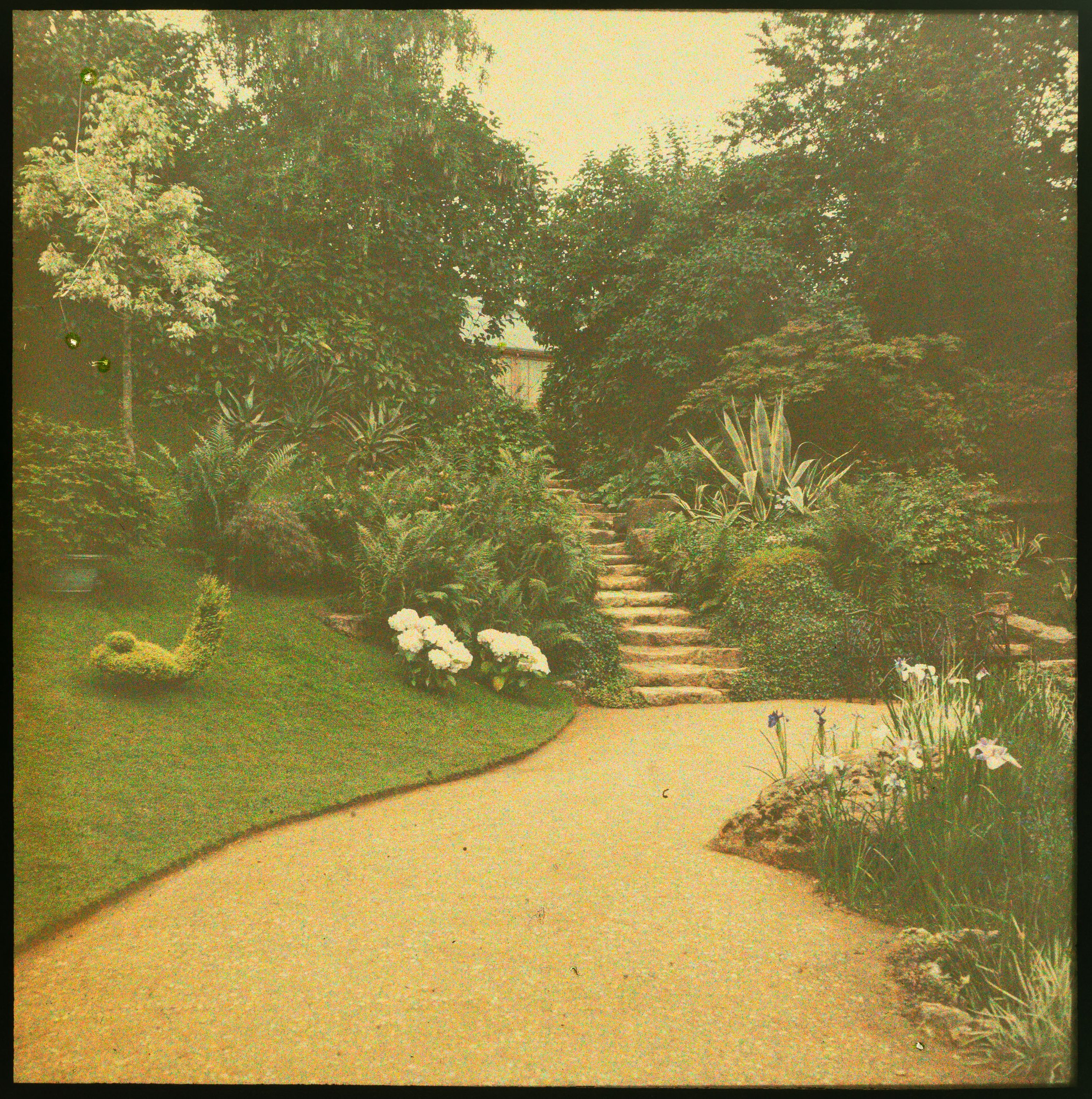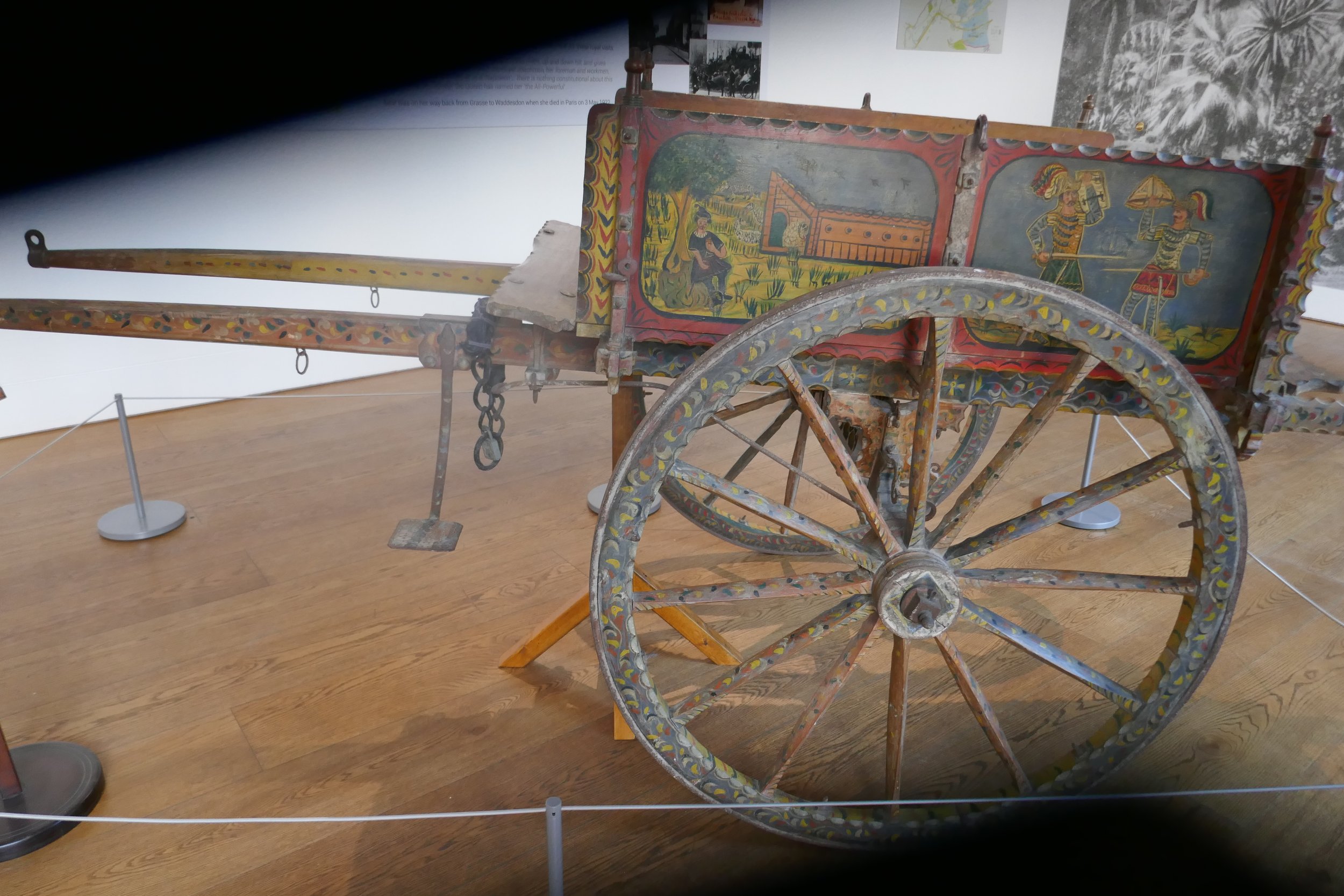In Search of Alice
Portrait of Miss Alice de Rothschild, by Josef Lowy, 1866 (aged 19; the year she moved to England). Black and white photograph. Waddesdon (Rothschild Family). Photo: Waddesdon Image Library
Alice at Eythrope c. 1910. Photo: Waddesdon Image Library
If like so many of us you are fascinated by the lives of people born incredibly rich in past centuries, particularly the few independently wealthy women who kept control of their own money and lives, from Elizabeth I to Beatrix Potter, then Alice’s Wonderlands, the new exhibition at Waddesdon Manor in Buckinghamshire, is a must. The palatial mansion, built between 1874-1883 as a weekend retreat by Ferdinand de Rothschild (1839-1898), after the death of his father, Anselm von Rothschild, in the style of a 16th century French château (but with all mod cons including many bathrooms), houses a show exploring the life of Alice de Rothschild (1847-1922), for the first time. Alice was the youngest of eight children.
Stereoscopic autochrome plate of the Dairy c. 1910. Stereoscopic autochrome glass plate. Photo: Waddesdon Image Library
Maintaining the Waddesdon fountains March 2022. Photo: Stockley
Waddesdon today, 2022, still immaculately maintained. Photo: Stockley
Visit not only for the exhibition but to soak up the magnificent house and extensive grounds and its museum-quality art collection, which Alice moved among and which her brother and she built up, sometimes competing at auction for the same lot. Strolling around the immaculately maintained grounds with famous aviary and private dairy, or the house itself with its acres of marble, chandeliers, bedrooms, bathrooms, salons, and copper-pan hung kitchen, one is readily transported to a weekend of wealth and privilege that was completely unique. There was a private station of course. The luxury outluxed many a palace. Royalty visited, including Queen Victoria and King Edward VII. Who might be met along the crimson carpeted corridors as one nipped out to the dairy to select a cow to provide one’s personal morning milk?
Yet, finding Alice is still curiously difficult, which she evidently intended, requiring all her papers destroyed after her death. Fortunately, a few letters, photos, and 150 bills for art she purchased escaped. But it’s still necessary to resort to an inner Maigret to try to discover the probably quite shy, certainly clever, shrewd and capable woman standing behind three houses in England and one in Grasse, France; and an art collection spanning Renaissance paintings to massy majolica to 16th century miniatures, 18th century portraits, and a rare pair of Riesener commodes.
Louis-Philippe-Joseph duc de Montpensier, later the duc d'Orléans (1747 - 1793)
François Boucher 1749, oil on canvas, Waddesdon (National Trust). Bequest of James de Rothschild, 1957. Photo: Waddesdon Image Library, The Public Catalogue Foundation, Art UK. One of Alice’s numerous treasures on display
*The von (later de) Rothschilds were truly European. Alice grew up fluent in English, German and French, and appears to have written her letters mostly in English. She was born in Frankfurt in 1847 to Anselm von Rothschild and his first cousin, Charlotte. The family moved to Vienna but Charlotte died when Alice was 12, after which she shuttled between European relatives. One friend described the peripatetic teenager as a shuttlecock. She may have longed for her own solid home. After seven years, age 19, she moved to England, to her own house on Piccadilly, somewhere opposite Burlington House. Ferdinand had been in London for a few years in a nearby mansion, and Piccadilly was dubbed “Rothschild Row.” Here Alice collected art and artefacts in earnest. When their father died in 1874, Ferdinand bought 2,700 acres of land from the Duke of Marlborough and began building Waddesdon as his weekend retreat. Alice bought a modest 1,400 acres at next-door Eythrope. She had the abandoned house demolished and a new, romantic looking one called the Pavilion, built, with a fine walled garden served by 70 gardeners, and other amenities. A landscaped drive linked the two estates. Oddly, Alice had been told she must not sleep near water, so only spent daytimes there. An enlargement of a watercolour on show by her constant older companion, Cecile Hofer, gives a good impression of the ivy-clad house.
Early photographs show a sturdy young woman in riding habit or extremely fashionable dress with a compelling, handsome face that conveys strength of character. In some she looks away, or obliquely, or quizzically at the camera.
Miss Alice de Rothschild 1860. Photo: Waddesdon Image Library
From around 1910, Alice made arguably better use of modern photography to commission colour “diascopes” of grounds and manor. The curators have used these informative, innovative records (the technique used potato starch) to specially recreate Alice’s red sitting room, a grand but pretty room of white-painted oak boiserie, Versailles parquet and a vast Savonnerie carpet originally commissioned for the Louvre. Another room dedicated to her collecting holds breathless treasures, which include Sèvres vases and a snuff box that had belonged to Queen Marie Antoinette. A further exhibition in the Stables Gallery looks at her various properties, while the walled garden at Eythrope may be visited by arrangement.
Stereoscopic autochrome plate of Alice’s Sitting Room at Waddesdon Manor.
c. 1910. Photo: Waddesdon Image Library. Her blue monkey vases, and one of the Riesener commodes, are in view
Photographs usefully enlarged in the Stables reveal an older woman, accustomed to control, stylishly dressed but without coquetry ( the hat shown below is in the height of fashion). Male servants stand around anxiously; one senses their gloved palms sweating, until, perhaps, Alice set off in one of several pony traps. One of these is on display: a surprisingly jolly, gaudily painted Italian affair, which surely says something about her, too.
Enlargement of a photo of Alice de Rothschild at Waddesdon on show in Stables Gallery. Photo: Stockley
After Alice inherited Waddesdon from Ferdinand in 1898 she inspected most areas of the manor daily when there. When away, she wrote daily to her head gardeners. She was particular. “Alice’s Rules” are still mentioned with awe.
She had a circle of wealthy and loyal women friends with whom she corresponded, but one gleans no sense of romance for any mortal, nor even a pet. It seems her romances were for the past and for the Rothschild house, collection, and gardens. Her house in Grasse (which she also built, but on a plot of only several hundred acres) completed her property portfolio. She spent half the year there.
The First World War saw huge change at this grand house, as at all others at that time. Many staff left to join the war effort and never returned. The gardens grew vegetables instead of flowers. Sheep mowed the lawn. Today’s Waddesdon is again much as Alice knew and presumably deeply loved it.
This charming exhibition leaves unanswered, perhaps unanswerable, questions and is a trifle shy on captions. One has to use one’s imagination; but that’s no bad thing, for one senses that Alice certainly used hers, and the best way to get a feel for her is to spend some time in her world.
A Sicilian pony trap on display in the Stables Gallery. Photo: Stockley
ALICE’S WONDERLANDS
Until 30 October 2022
Waddesdon Manor,
Aylesbury, Buckinghamshire, HP18 0JH










